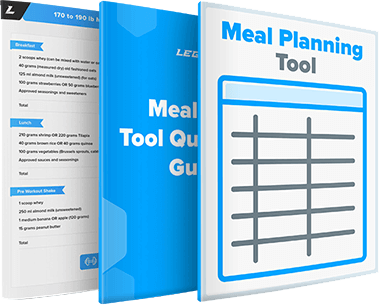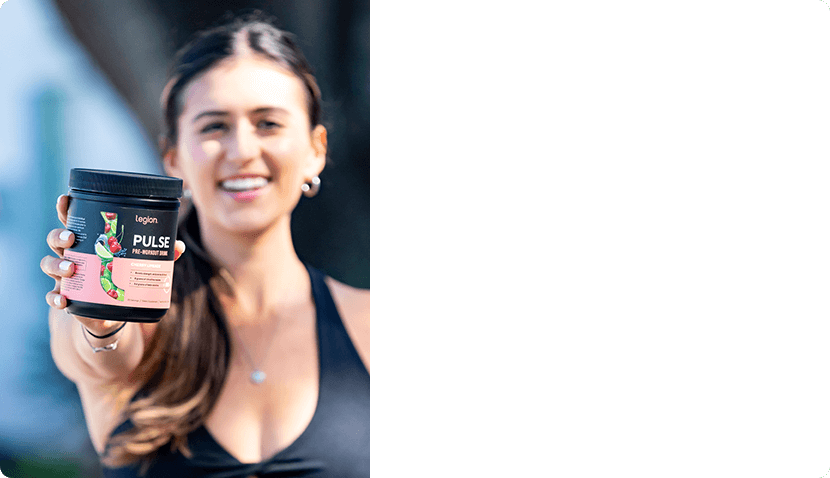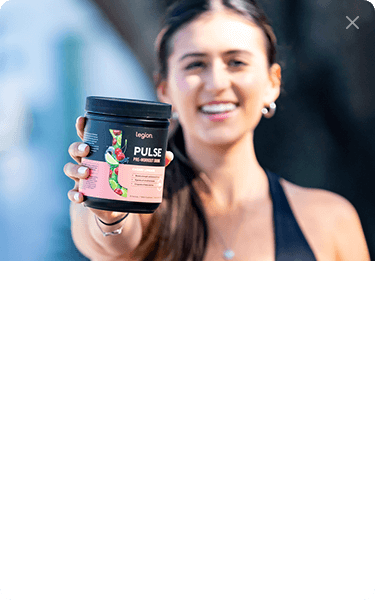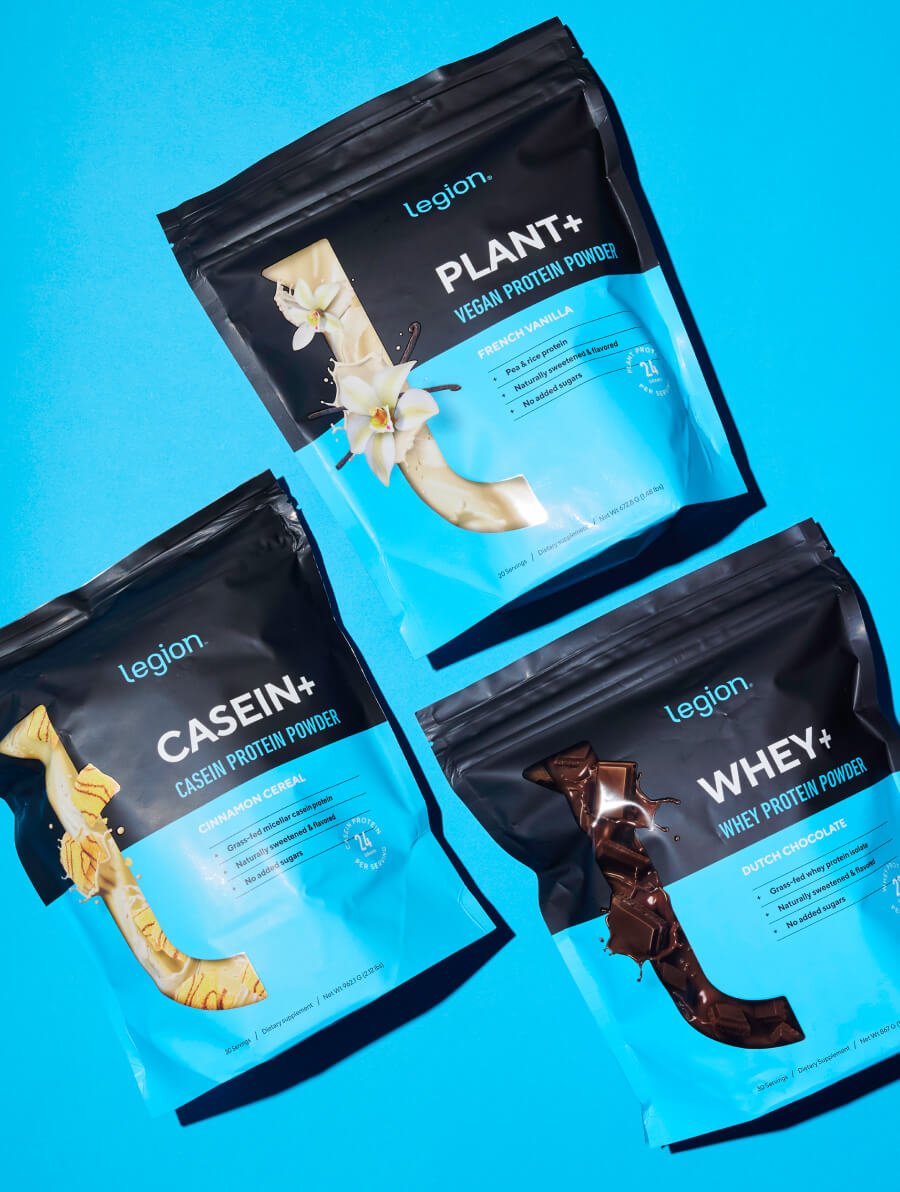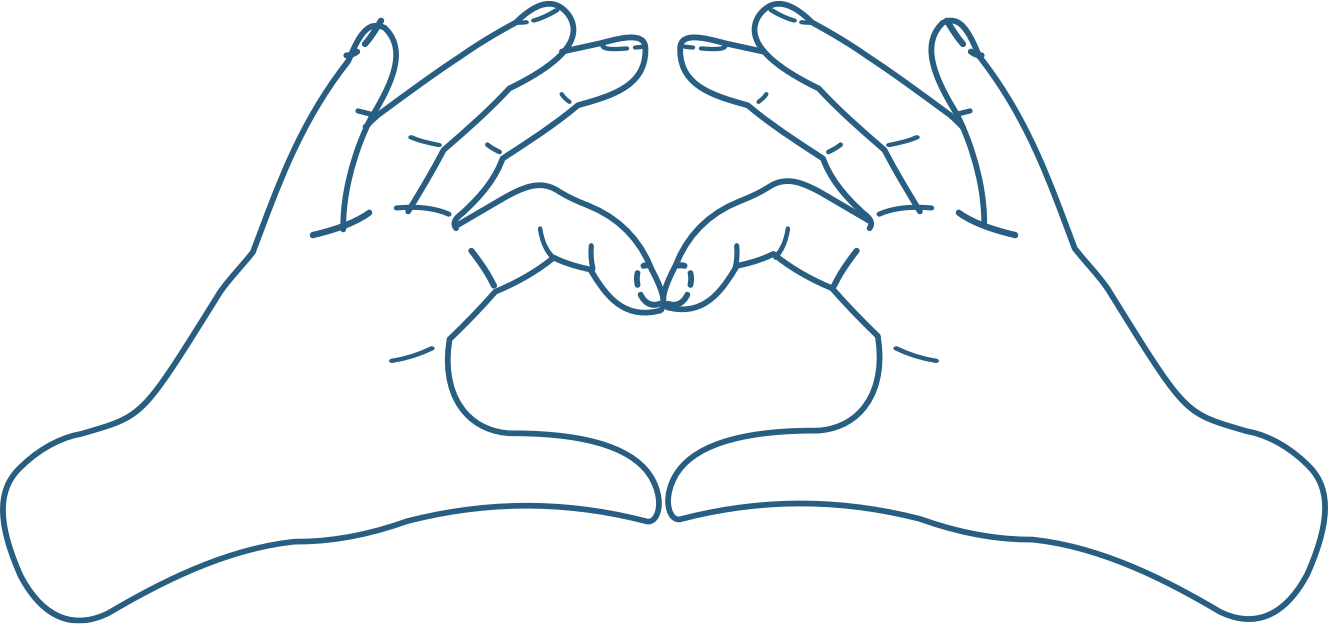In this podcast I answers reader questions on how to make flexible dieting as “flexible” as possible, how to best work lifting and cardio into your schedule, and my recommendations on how women should work with weights.
What did you think of this episode? Have anything else to share? Let me know in the comments below!
Transcript:
[00:00:00] Hey, it’s Mike. And this podcast is brought to you by Legion, my line of naturally sweetened and flavored workout supplements. Now, as you probably know, I’m really not a fan of the supplement industry. I’ve wasted thousands and thousands of dollars over the years on worthless supplements that Basically do nothing and I’ve always had trouble finding products actually worth buying and especially as I’ve gotten more and more educated as to what actually works and what doesn’t and eventually after complaining a lot, I decided to do something about it and start making my own supplements.
The exact supplements I myself have always wanted a few of the things that make my products unique are one they’re 100 percent naturally sweetened and flavored, which I think is good because while our official sweeteners may not be as harmful as some people claim, there is research that suggests regular consumption of these chemicals may not be good for our health, particularly our gut health.
So I like to just play it safe and sweeten everything with stevia and erythritol. Which are natural sweeteners [00:01:00] that actually have health benefits, not health risks. Two, all ingredients are backed by peer reviewed scientific research that you can verify for yourself. If you go on our website and you check out any of our product pages, you’re going to see that we explain why we’ve chosen each ingredient.
And we cite all supporting evidence in the footnotes. So you can go. Look at the research for yourself and verify that we’re doing the right thing. Three, all ingredients are also included at clinically effective dosages, which are the exact dosages used in those studies that prove their effectiveness.
This is very important because while a molecule might be proven to, let’s say, improve your workout performance, not all dosages are going to improve your workout performance. If you take too little. You’re not gonna see any effects. You have to take the right amounts and the right amounts are the amounts proven to be effective in scientific research.
And four, there are no proprietary blends, which means you know exactly what you’re buying when you buy our supplements. All of our formulations are a hundred percent transparent in terms of ingredients and dosages. So if that sounds interesting to you and you wanna check it out, [00:02:00] then go to www.legionathletics.com.
That’s L-E-G-I-O-N at. And if you like what and you want to buy something, use the coupon code podcast, P O D C A S T. And you will save 10 percent on your order. Also, if you like what I have to say in my podcast, then I guarantee you’ll like my books. I make my living primarily as a writer. So as long as I can keep selling books, then I can keep writing articles over at muscle for life.
For life and legion and recording podcasts and videos like this and all that fun stuff. Now I have several books, but the place to start is bigger leaner, stronger if you’re a guy and thinner leaner, stronger if you’re a girl. Now these books, they’re basically going to teach you everything you need to know about dieting, training, and supplementation to build muscle.
Lose fat and look and feel great without having to give up all the foods you love or live in the gym grinding away at workouts you hate. And you can find my books everywhere you can buy books online like Amazon, Audible, iBooks, Google Play, Barnes Noble, Kobo, and So forth. And if [00:03:00] you’re into audio books like me, you can actually get one of my audio books for free with a 30 day free trial of audible to do that.
Go to www dot muscle for life. com forward slash audio books. That’s muscle for life. com forward slash audio books. And you’ll see how to do this. So thanks again for taking the time to listen to my podcast. I hope you enjoy it and let’s get to the show.
Hey, this is Mike Matthews from muscle life. com. Welcome to the podcast. Thanks for stopping by. In this episode, I’m going to be continuing the Q and a I checked the Google moderator and there are a few new questions that have gotten voted up, so I’m going to tackle them. And there are also questions that I get asked fairly often in my email and social media and so forth.
So I think they’d make a good podcast and [00:04:00] specifically what the questions are me relating to are some just some diet. advice in the way of meal planning, meal tracking, using my fitness pal how to make the progression kind of into flexible dieting as smooth as possible on how to go from a kind of newbie to a more advanced, flexible dieter in a sense and some tips and tricks that I like to use.
And then the other question is gonna be about cardio and weightlifting and if doing cardio impairs your weightlifting gains and how to manage that. And then the last question is going to be about why I recommend that women start training in a higher rep range than men with lighter weight than men and when women should start including heavier weightlifting in their training.
All right, so let’s get to it here. So the first question here comes from Neil and he says that I give some great nutrition advice and he wants me to share how I implement this. For example, currently using my fitness pal works very well. But do you measure your meats raw or cooked? There seem to be a lot of ways to do this.
So I’m going to take this simple question. I [00:05:00] measure everything raw because cook weights can change but I want to talk a bit more about just flexible dieting in general and how to how I like to utilize it and how I think people that are new to it should You use it in the beginning and then how to progress from that newbie stage into a more once you become more comfortable with it and how to make it even more flexible, in a sense.
So one thing that I still do myself is I don’t really track on a day to day. Like I don’t use my fitness bowel because I prefer to make a meal plan. And I eat certain meals are fixed in terms of, I eat the same foods every day cause I really like them. They just taste great. I don’t have any reason to change them.
I do every once in a while, every few months or so I’ll do something different. So those meals are very simple. I keep some food here at the office like for instance honey crisp apples are in season right now. They’re so delicious. So I’ll work a couple of those in my meal plan every day.
I eat these spelt muffins that are spelled English muffins that are super good with some PB two and [00:06:00] jelly. So certain things that I just, those, these, those meals are real good, real tasty. And So those don’t change. And then other meals, like for instance my dinners, are a bit more flexible in terms of, I just have numbers.
Like I’m going to eat 100 grams of carb, probably about 50 grams of protein, and 20 grams of fat. And that’s my dinner. I decide on a day to day basis. Sometimes I just get into a a mood of because I’m working on a new cookbook right now. So I use that dinner slot to try different recipes.
And then if one’s particularly good, I might eat it a few days in a row and just play with it. And I’m making that work in terms of like I’m going on. I’m pretty familiar with the different foods that I eat now, but If there’s something I’m not familiar with going calorie king, and I do check it out to see what am I actually eating, but that is a good way if you want to, just go home and decide, do you feel like having some pasta?
Do you feel like having some potato? Do you feel like having some sweet potato or do you feel like having some bread, whatever, just, you got to work out in those numbers. And if you are [00:07:00] maintaining or whatever. You have a little bit of flexibility there. I would say you have more flexibility in terms of if you’re 50 calories or a hundred calories over your what your allotment for that meal, if you’re maintaining, it’s not that big of a deal.
I would say you have probably the most flexibility when you’re maintaining than when you’re cutting or bulking because when you’re cutting, if you get too loose with your meals, you might end up overeating by 400 calories a day. And if you do that enough days in the week, that. That can be, that’s it, you might not even lose any fat that week.
And if you’re bulking and you do that and you are too loosey goosey and you’re overeating by 400 calories a day when you’re bulking, then you’re just going to be, So eating, you’re going to be in an even bigger surplus, which means faster fat storage, which means as you get fatter insulin sensitivity goes down in your, not just in your fat cells, that’d be great but in your muscle cells as well.
And one of insulin’s jobs is to drive nutrients into the cells. So you want your body to be responding well to insulin signals. And as you get fatter, it just doesn’t. So when you’re bulking, that’s, you don’t want [00:08:00] to be gaining fat too quickly. Because as it goes on, you’re impairing your body’s ability to build muscle.
So that’s when you’re bulking. I, and the mistake that so many people make is they think they’re bulking. So they can just, who cares if they eat another chocolate bar or they eat another this or another that, whatever. That’s definitely the wrong way to look at it. Because what will happen is you’ll gain fat too quickly.
And so then you’ll only, let’s say, be in two months of a surplus instead of four months of a surplus. And you only have built, as much muscle as you’ve built in those two months. And then you have to cut. And if you do the cut right and you preserve that muscle, you still now, let’s say the cut takes another two months and you’re back to a bulk that you want to be dragging those books out.
You want those books, you want to, you want to be four months or even longer depending on, your body and how it responds to a surplus of food in that surplus. Building muscle, and then when you flip to a cut, ideally it’s as fast as possible without crash dieting so you can get back to bulking and so forth.
When I’m [00:09:00] maintaining I’m following numbers, some days I’m going to be a little bit over, some days I’m going to be a little bit under and it all evens out. when I’m cutting. I usually am a bit more specific with my foods when I’m cutting. So those hundred grams of carbs might be 500 grams of potato or something like that, or, 70, I don’t know 70 grams of carb from potato and some vegetables as well, but it’s a bit more precise just so I don’t accidentally, overeat basically.
But in the beginning what I recommend, if you’re new to flexible dieting and you’re not sure if it really works because you’ve heard all the bullshit out there about, fat loss requires that you don’t eat certain foods or you do eat all these different types of foods or you do this kind of cleanse or, you don’t eat after a certain time period or whatever.
And if it sounds to you, flexible dieting, which is just hit certain numbers every day, eat foods you like, eat whenever you like. If that sounds too good to be true, I understand. I thought the same thing in the beginning. I thought I was definitely skeptical. So that’s why in the beginning I recommend that you create a meal plan, which I will link an article down below that shows [00:10:00] you exactly how to do this, that fits your numbers.
You eat the exact same foods every meal, every day. These are foods you like, so you’re not going to get sick of, it’s going to take you probably a good three or four weeks before you feel over anything particular because you’re eating foods. You like so you eat the same foods every meal, every day, see how it works, see how your body responds.
And then, you’ll see the weight coming off and then you’ll know. That is, it is that simple. So from there, if you want to make some changes, I recommend that you start with changing individual meals. So let’s say your breakfast is normally, I don’t know 40 protein, 70 carb and like 20 fat, and you want to do a new breakfast.
Take those numbers. Go on calorieking. com, come up with something new and make that your breakfast and then eat that, and see that your body still continues losing fat and you still feel good. No problems. Okay, cool. Maybe your lunch now can change next or maybe your dinner or whatever.
but you’re still following, you’re still eating the same foods every day. And when you feel comfortable with that, [00:11:00] then, if you want to just do what I’m doing right now, cause I’m maintaining, which is just, you have certain, you can do it when you’re cutting too, but then that’s where my fitness pal comes in.
So if you’re going to just say, Hey, I need, for my lunch, I want to eat 70 carb, 30 protein and 10 fat. And you want to just decide on the fly, on the go what is that going to be every day? You’re going to want to use my fitness pal. Okay. You’re going to want to set custom macros on the website though, don’t use their recommendations because it’s too low calorie, too low protein, but you’re going to want to, go set custom macros, use that app.
Don’t go out and eat at restaurants because you don’t know what’s in there. There, you have to assume there’s always more calories than want there to be usually in the form of like butter cream and oil and stuff like that, you know What just makes food taste good? So you’re gonna want to prepare the food yourself and or Or if it’s just simple things like fruit and certain vegetables and nuts and things that only prepared you just have them eat them and track how much you’re eating and That’s where weighing comes in.
You’re gonna want to know Okay. You’re going to eat [00:12:00] almonds. How many almonds put it on the little food scale? I have one at the office. So if you’re going to eat, a hundred grams of almonds or whatever it is, then you can be very precise in your intake. But then you can be flexible.
You can eat different foods every day if you’d like, but you have to be willing when you’re cutting, at least to go through that drudgery, I guess a little bit. And it’d be the same for bulking and maintaining. If you’re really trying to, if you’re really your intake is different every day in terms of what you’re eating, then you just have to get used to.
Tracking things basically. And then also along the way, you’re going to start learning foods and you’re going to start getting familiar with foods. So then if you’re, let’s say you’re out doing something all day and you’re at Disney world and you’re not, you don’t want to bring, all your snacks and things with you.
You want to eat when you’re there. Then what you can do is when you’re familiar with foods and you go to a restaurant and you can look over a menu and you’ll immediately know certain foods are just off limits because there’s way too much fat or you don’t know what’s in there. There’s probably too much or whatever, but then there are plenty of things that you can know, okay that’s a, that, that can’t be that [00:13:00] bad.
You know what I mean? If you’re at a steakhouse, for instance, tons of things you can order at steakhouses that you can get a pretty good idea of. And sometimes even I’ve Checked on my onion calorie king, for instance if there’s calamari, for instance calamari is yeah, it’s okay.
It’s fried and battered squid, but it doesn’t change the, unless there’s some high calorie sauce with it. Usually it’s a marinara sauce or something sweet. You can find some numbers on that online, just so you can have an idea. That’s what I do. If I’m, if I just want to make sure I don’t grossly overeat, I’m not trying to hit an exact number, sometimes I’ll do that.
I’ll check certain things and just, maybe round up or something like that. Yeah, those are some just general kind of tips that I recommend in terms of flexible dining how you can get into it and then see that it works and then start changing with it and start playing with it. All right.
So the next question here is from Gary from South Korea. And he is, he says that, Hey Mike, a lot of confusion out there about this, myself included. If I do a 16 to 20 minute Tabata session, I might [00:14:00] actually not be pronouncing that correctly. Hit high intensity interval. After a BLS lifting session, am I killing gains or affecting muscle growth?
If so, are there ways to combat this such as eating extra? It’s a good question. Something I get asked fairly often. I’m going to be actually addressing this a bit more. I address it in bigger, leaner, stronger, but in the second edition, which is going to be out in about a month, but in sometime in December I’m going to be addressing this even more.
And. Here’s the thing there, there is the research that, that I cite in the book and the explanations of why combining strength and cardio is not the best idea and impairs your gains on both fronts because it sends mixed messages on a cellular level. This is most seen in CrossFit sports.
where, you’re really combining your weightlifting or turning your weightlifting into a cardio workout. So that is not ideal for improving strength or cardiovascular performance or capacity. But it does apply also to if [00:15:00] you’re weightlifting and then doing cardio right after. However, In working with a lot of people, I can say that there are quite a few people that due to, there’s life obligations.
They can’t necessarily get to a gym twice a day or they don’t they’re not able to do their cardio at home. Which by the way, if that, if you’re in that position where you don’t want to go to the gym twice a day, wants to lift and wants to do cardio, I understand I’m the same way. I wouldn’t want to drive to the gyms to do cardio.
You could look at getting like a recumbent bike and just sticking it in your garage. I live in a condo building and the gym in the condo building. It has some weight, some dumbbells up to 50 pounds and some machines and stuff, which I don’t care about, but it has a recumbent bike. So I’ll just go upstairs and, do my cardio there.
But if I had a house, I would definitely, I would just have a recumbent bike, probably stick it in the garage and that would be it. So it’s an easy way to do cardio, or you can just go outside, you can do sprints outside, you can do sprints on a bike, just riding a bike. I like the recumbent though, just because I can bring my iPad, I can read or watch TV show or something.
And the time just flies by. Rowing machines are good as well. It’s another good form of cardio. But if none of that’s [00:16:00] no, that’s possible, then you can do your cardio after weightlifting. Like I said, I’ve worked with a lot of guys now and a lot of girls as well that do this and don’t seem to have any trouble.
They continue to make gains. They do all right. What some of them like to do. Is they like to just drink their, they’ll have they’ll lift and then just have a scoop of whey protein and then do their cardio just in case it can help, which it may I don’t know of any research.
It’s such a kind of specialized situation. I don’t think there’s any research out there really even going into it. Lending some insight on into that, but it may help. But the point is, especially because if you’re doing high intensity interval cardio, where it’s already a bit more muscle protective and I’ll link an article down below, which explains why that is.
It relates mainly to hormones and then also to the fact that, especially if you’re biking or rowing, you’re using muscles in a similar way that you would use them in your weightlifting. And that helps just preserve muscle and strength through doing cardio. So if you’re doing [00:17:00] 20, 25 minutes of high intensity interval cardio, that’s very different than, weightlifting and then going and jogging for six miles or something like that.
The former, or sorry, the ladder going out for a long run or something like that after weightlifting would not be a good idea. But the shorter 20, 25 minute, maybe 30 minutes max bout of high intensity interval cardio after weightlifting doesn’t seem to get in the way of anything. So ideally you’d separate those workouts.
And that’s, again, that’s looking at it theoretically. It’s hard to say exactly. Obviously you can’t compare. I don’t have. Some controlled study where one, you have, this group of people are separating their workouts and this group of people are doing their hit cardio after their weightlifting.
But I have worked with a lot of people and I know that doing the cardio after the weightlifting doesn’t, it’s not a game breaker. Ideally, though, you’d separate the workouts. Okay. Now, so let’s get the next question here is from Anna from Brazil, and she asked why women should train in the eight, 10 rep range instead of the four, six rep range as good question.
I get asked that fairly often. If you’re not familiar with what she’s talking about, [00:18:00] she’s referring to my book, thinner, leaner, stronger, in which I recommend that women train in the eight to 10 rep range and versus my book, bigger, leaner, stronger for men, in which I recommend that. Guys train in the four to six rep range.
And there are a couple of reasons for this. One is that after working with a lot of women especially if they’re new to weightlifting, I find that one, they’re a little bit intimidated in the beginning, which I understand most guys are too. But two, they are very. Weak when it comes to proper weightlifting.
Sure. A lot of women, they’ll do things with dumbbells and do body weight stuff. And that’s cool. If they’re supposed to now push a barbell, whether it’s a bench press or, push it above their head, 45 pounds, that now is a whole nother thing. Most women that I’ve worked with, they start with dumbbells because the barbell is even too much.
And so they’re working with dumbbells just to work in the 8 to 10 rep range. And then that feels very heavy to them because many women are used to doing very high rep training. 20, 30 rep type stuff, because that’s what’s pushed in a lot of magazines. [00:19:00] So even starting in the 8 to 10 rep range is, feels very heavy and it can be a bit intimidating.
So starting in this 4 to 6 rep range, we’re using about 80 to 85 percent of your 1 rep max. I mean that I’ve had women try it and they were very uncomfortable with it and then went back to the 8 to 10 rep range. To get used to that. So yeah, that’s the first reason. The second reason is With certain lifts like the deadlift and the squat and the bench press the military press.
They’re very form reliant They’re great exercises, but you have to do them correctly. And if you do them incorrectly, you can get hurt Or if, maybe injuries are uncommon, but you can strain things you can, aggravate things, you can aggravate tendons and it’s just no fun.
You want to, push heavyweight, pull heavyweight, squat heavyweight, but you want to make sure you’re doing it correctly. So you don’t put yourself at risk. Set yourself back and the heavier you go, the more likely you are to let your form go out and the more likely you are to maybe [00:20:00] round your back too much on a deadlift and piss it off or, bow your knees in on your squat when you’re ascending and, piss something off there or whatever.
And so what I find with many women is while men can start out with heavier four to six rep 80, 85 percent of your one rep max and get shown the form and do pretty well, they come into the game much, much stronger than women do. So I find that women, New to weightlifting find it much harder to maintain proper form when they start with very heavy weights as opposed to less heavy weights.
Now, H10 rep range is not light. It’s just not very heavy. And even that, like I said, many women struggle in the beginning to get their form in the H10 rep range and really keep it in. But then, after a few months, everything’s good and they’re rolling. And that’s not a problem. And then the last reason why relates to muscle recovery women’s bodies can’t recover from muscle damage caused by weightlifting nearly as well as guys bodies can simply because [00:21:00] there’s such a difference in testosterone levels.
Women’s bodies have, about a tenth of the testosterone on average is is as men’s bodies. And testosterone, hormonally speaking, is the primary anabolic driver of muscle growth and muscle recovery. The more testosterone you have in your body the faster your muscles are going to recover and the stronger they’re going to be and the more you’re going to gain in the gym.
And. That, that, that’s a simple, that’s a, I guess a simple way of looking at it, although you should know that it’s worth noting that natural fluctuations in testosterone, which are small, are not going to make a big difference. For instance if some guys at 500 NGDL test and some other guys at 600, their gains in terms of strength and size are going to be nearly identical.
You’re not going to see a difference there. But if a guy’s at 500 and another guy’s at 1, 100 or 1, 000 or whatever, there’s going to be a difference. It’s not necessarily going to be, oh, night and day. This one dude looks like a massive roid beast, and the other dude just looks like a skinny, fat weakling.
But the [00:22:00] dude at 1, 000, the guy at 1, 000 NGDL will make gains faster and will be able he would be able to train more frequently. He’d be able to, train with a higher weekly volume and so forth. So Bringing it back to women, it’s a recovery thing, in the beginning women’s bodies probably could do fine with some 4 6 rep training, but I wouldn’t recommend all of the training, or the majority of the training, in the 4 6 rep range, like in Bigger, Linear, Stronger, or in the program, the advanced program of Bigger, Linear, Stronger, which is beyond Bigger, Linear, Stronger.
That includes some heavy 2 3 rep, like powerlifting type stuff. And, again, women can do this, but not all the way. on the program that is laid out for men because it’s simply too much for their bodies and they will end up overtraining after a period of time. So with all that said what I find works well and something I’m going to be including in the second edition of Thinner, Linear, Stronger, which I’m almost done with I’m done with my part of it.
It’s being typeset and it’s being all put together now. And that is [00:23:00] that once women are. with the eight to 10 rep range and they’ve built a foundation of strength and muscle. They then can benefit from the inclusion of some heavier weightlifting. And I’ve worked with a lot of women now that we’ve worked to this point where they started, they had trouble, in the beginning, even lifting the bar, let’s say, or pressing the bar.
And now they’re bench pressing 85 pounds or wherever it is. And they’ve they really have their form down. And they want to take their training to the next level. We then include three sets of four to six rep training in each of their workouts and starting their workouts with the heavy and using compound exercises like, they’re going to start their chest training or their push training with like three sets of four to six rep bench press.
Or if it’s shoulders then it’d be like three sets of four to six rep military presses pulling her back would be three, three sets of four to six rep deadlifts legs would be squats, of course, and That works very well. I’ve again, I’ve worked with quite a few women that have been able to [00:24:00] break through plateaus of after a year or so of working in the 8 10 rep range.
Very happy with how their body has changed, but trouble, taking it to the next level, including some heavier weightlifting has very really helped them. So I’m going to be, I’m going to be talking more about this in the book and how to work it in, but I thought I’d just So that out there, just in case, if you’re listening and you’re a woman in that situation where you feel like you could be doing more about how to do it, that’s how I recommend it.
All right. So those are the three questions I want to cover in today’s podcast. And if you want to submit questions or if you want to go vote on other people’s questions for the next time I do it, this Q and a style of podcast, then just go to the Google moderator page, which is linked down below.
And as you’ll see, it works works like Reddit. Basically, you have a bunch of questions and you can say, this is a good question or this is a bad question. And then you can submit your own questions and other people can rate them. And so then I can just go down them, pick out popular questions.
I try to pick out ones that I also get asked a fair amount myself. So it has a broader appeal and and then I’ll take them and [00:25:00] I’ll answer them. All right. Thanks again. And I’ll see you next time. Hey, it’s Mike again. Hope you like the podcast. If you did go ahead and subscribe. I put out new episodes every week or two where I talk about all kinds of things related to health and fitness and general wellness.
Also, head over to my website at www. muscleforlife. com where you’ll find not only past episodes of the podcast, but you’ll also find a bunch of different articles that I’ve written. I release a new one almost every day actually. I release four to six new articles a week. And you can also find my books and everything else that I’m involved in over at muscleforlife.
com. Alright, thanks again. Bye.
